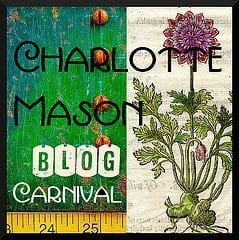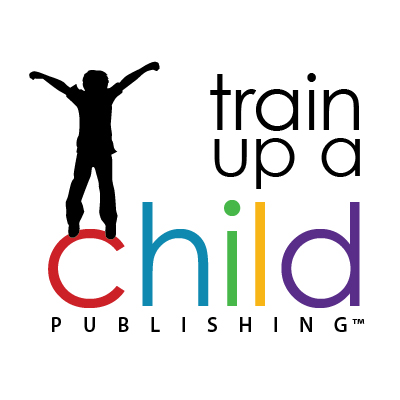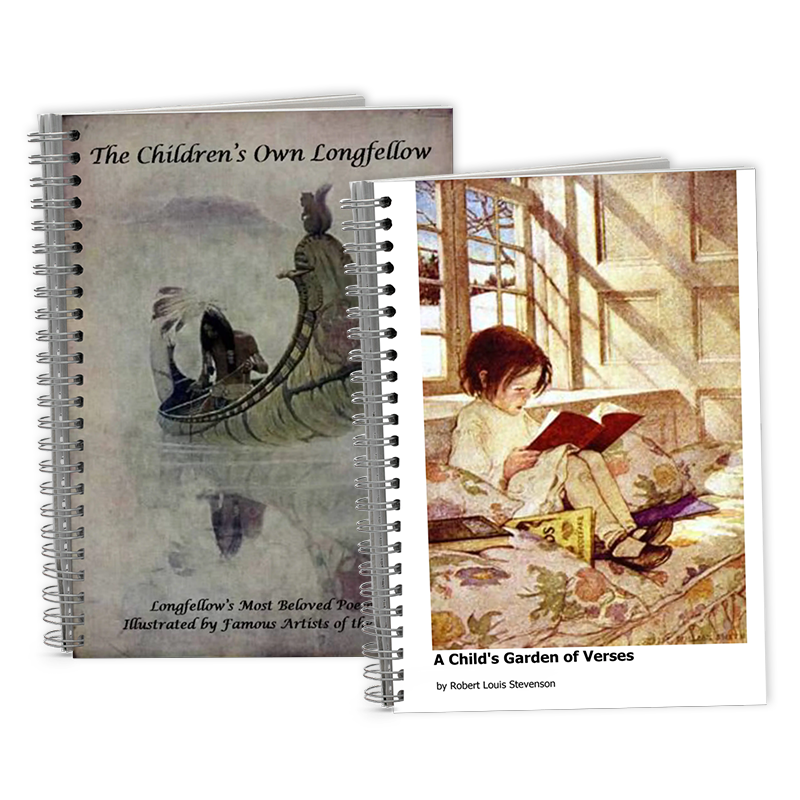Charlotte Mason Blog Carnival – School Books and How to Use Them

This blog carnival edition is prompted by Volume 3, chapter 16 of the Charlotte Mason series posted on Ambleside Online, entitled How to Use School-Books.
School Books and How to Use Them
According to chapter 15 and 16, the books we choose for school should be books that
- “sustain the thought-life of a child”
- have an “upheaving effect on the mind”
- are “teeming with fresh ideas from the minds of thinkers”
When we think about “School books,” we certainly aren’t talking about textbooks. They may be literature books, history books or books about anything, really. Just as long as they are living books (i.e., books with “living ideas”) that inspire our children’s minds.
But how do we know what our kids are learning from the books they read?
Ms. Mason’s favorite method for helping children assimilate what they have heard is narration.
The simplest way of dealing with a paragraph or a chapter is to require the child to narrate its contents after a single attentive reading... –Charlotte Mason, Vol. 3, Chapter 16
Here is a post about basic narration from the Train up a Child Publishing blog. Along with narration, Ms. Mason suggests there are other uses for school books other than reading and narration:
But this is only one way to use books: others are
- to enumerate the statements in a given paragraph or chapter
- to analyse a chapter
- to divide it into paragraphs under proper headings
- to tabulate and classify series
- to trace cause to consequence and consequence to cause
- to discern character and perceive how character and circumstance interact
- to get lessons of life and conduct
- to gain the living knowledge which makes for science
…out of books; all this is possible for school boys and girls, and until they have begun to use books for themselves in such ways, they can hardly be said to have begun their education. —Charlotte Mason, Vol. 3, Chapter 16
For other methods to use as alternatives or along with narration, see 15 Creative Language Arts Lessons Using Living Books, also on this blog.
Art, Music and Poetry Appreciation
Jim Erskine of Homeschool Freebie of the Day offers us a vintage pdf reprint of a classic book about the value of developing music appreciation with young children. Although there may be a sign-up form or two here, it is not necessary to sign up to receive the ebook, Music Talks with Children. Look for the link about halfway down the page. Thank you for the freebie, Jim!
Including music as well as art and poetry, Patti from the scrumptious All Things Bright and Beautiful blog provides information for several lesson plans on her June 12th post concerning the artist, Robert Bateman, composer Franz Joseph Hayden, and the American poet Phillis Wheatley.
Carol from the journey-and-destination blog posted some helpful science videos & a plan for reading through A Child’s Geography, by Ann Voskamp.
Literature Study
In a second post, Carol offers up her nine-week schedule for studying Shakespeare’s Twelfth Night (or What You Will). This is especially suited for those of us who have high school students.
This carnival is short but sweet. Thank you to the authors who participated.
Blessings and thanks for reading!
![]()


Thanks for hosting, Dana, and for the quote from volume 3. I don’t remember reading that! Vol 6 also sheds some illumination on creative narration which was very helpful to me when I first read it.
Hi Carol, I read that section more than once before I saw that quote as well! Thanks for the suggestion to revisit Vol. 6 regarding creative narration. I glean something new every time I read these volumes, don’t you? Thanks again for both of your contributions this week, Carol.
Thanks for hosting the Carnival Dana!
You’re quite welcome, Karen!